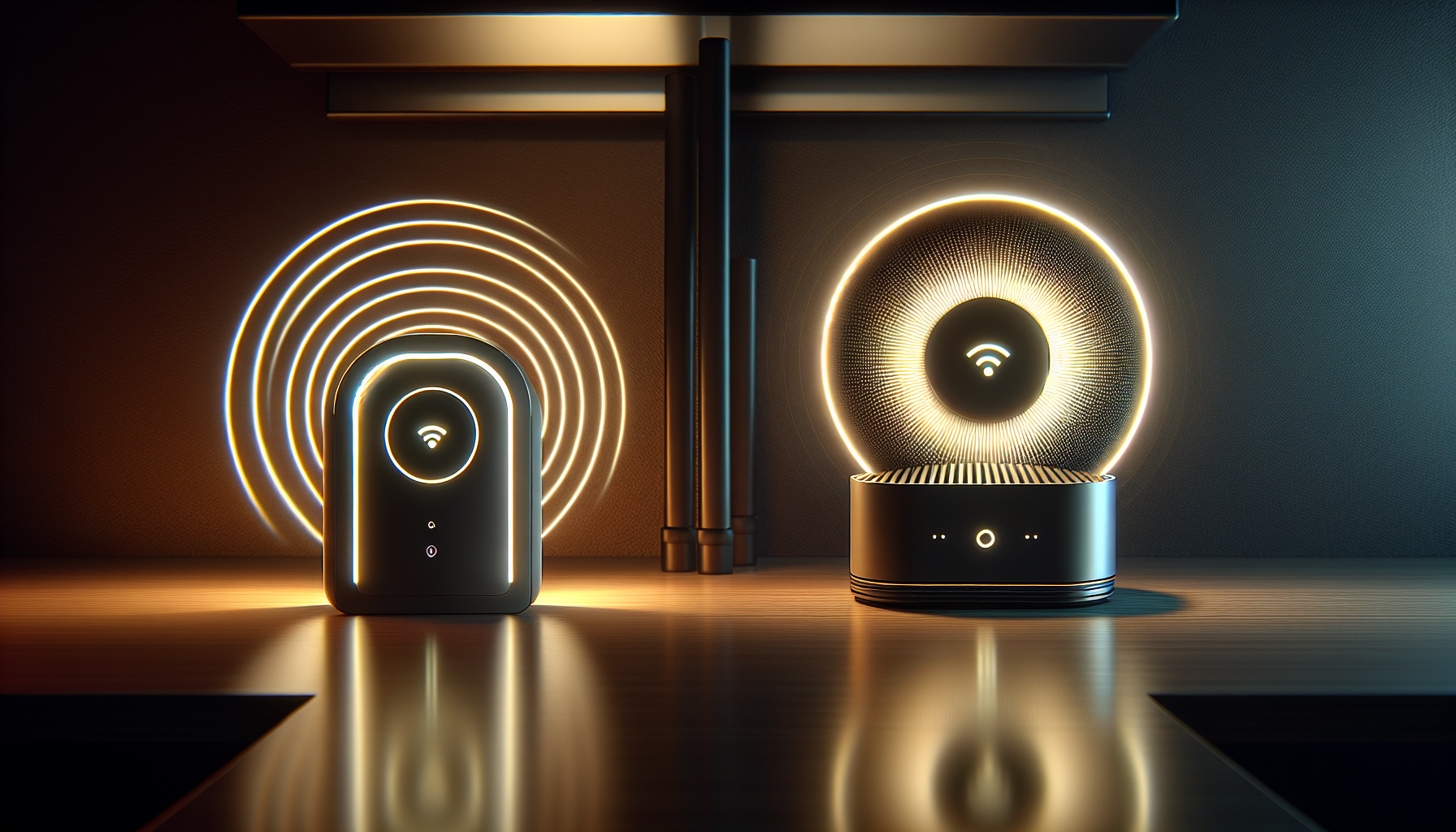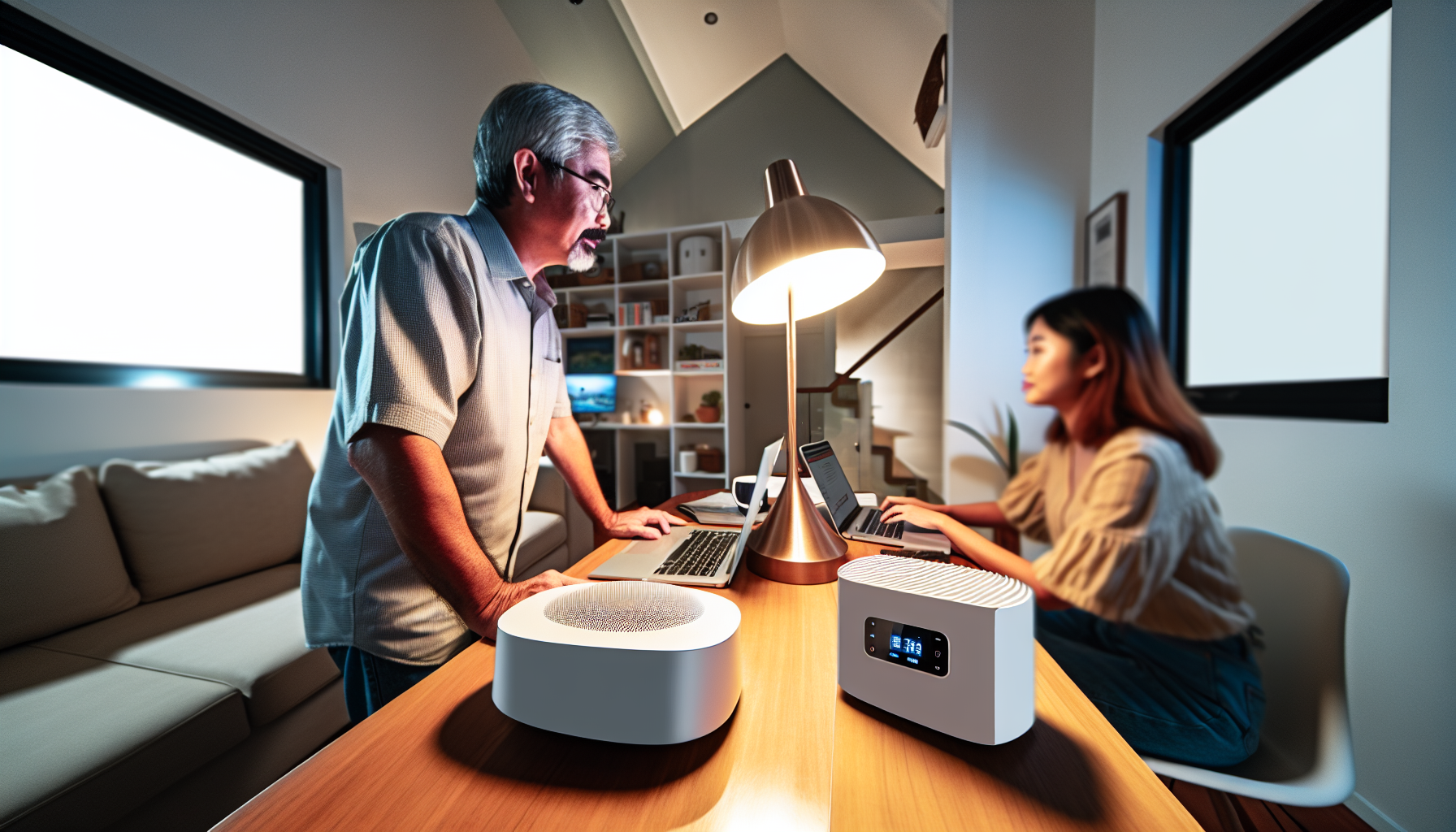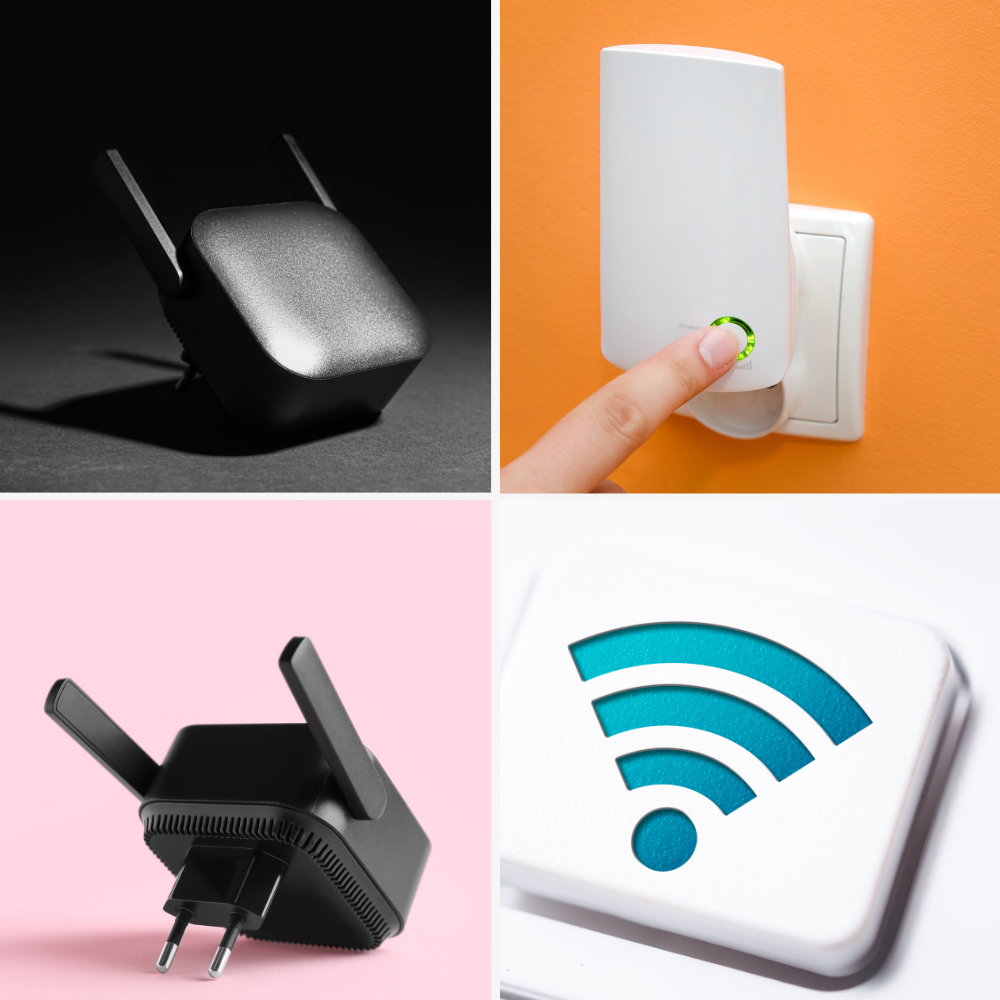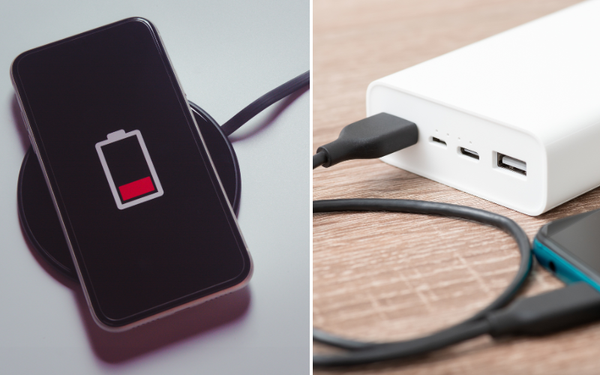Ever battled with slow internet speeds or wifi dead spots in your home? You’re not alone. Many struggle with maintaining reliable and fast internet connectivity across their living spaces, leading to frustrating browsing experiences, interrupted video calls, and sluggish streaming. Discover WiFi boosters and extenders, your knights in shining armor, ready to enhance your WiFi performance, coverage, and speed. But what is the difference between a wifi booster and wi fi extender? Let’s find out.
Key Takeaways
- WiFi boosters amplify the existing signal to increase range, while Wi-Fi extenders capture, amplify and retransmit the signal to areas with weak connections; placement is crucial for optimal performance.
- Correct positioning of a Wi-Fi booster or extender is vital for maximizing signal strength and coverage, and obstructions such as walls can impact performance.
- Choosing between a WiFi booster and a Wi-Fi extender depends on specific needs such as coverage area, speed, compatibility with current devices, ease of installation, and budget.
Unraveling the Terms: WiFi Booster vs. Wi-Fi Extender

The terms WiFi booster and Wi-Fi extender often create confusion, as they both promise to improve wifi coverage and eliminate dead spots in your home or office. Yet, these devices function differently and cater to different wifi needs.
Let’s clarify these terms and identify their differences.
Defining a WiFi Booster
A WiFi booster, also known as a wi fi booster, is like your wifi network’s personal trainer. It takes the existing wifi signal and retransmits it, amplifying its strength and extending the range, just like a trainer helps you boost your fitness and reach your goals. But not all trainers are created equal. The world of WiFi boosters, including wi fi boosters, offers different categories, such as WiFi extenders, Mesh WiFi systems, and even specific configurations like MoCA/Ethernet WiFi Wireless Network Extenders.
However, similar to how a personal trainer can’t guarantee fitness for every client, a single WiFi booster might not provide coverage for an entire home and yard. But, if used strategically, like ScreenBeam’s WiFi Network Extenders, they can enhance the speed and performance of each device by reducing the distance to the WiFi access point, potentially enabling comprehensive home network coverage. And you may have heard people interchangeably use the terms WiFi booster and wireless range extender, but in essence, they serve the same purpose to broaden the reach of a wireless network.
Understanding a Wi-Fi Extender
Now, let’s familiarize ourselves with the Wi-Fi extender, another integral component in improving wifi. A Wi-Fi extender, also known as a wifi repeater, is a standalone device designed to capture the signal of a router, amplify it, and then retransmit it to expand the coverage within the WiFi network. However, contrary to some beliefs, a Wi-Fi extender does not strengthen the original signal. Instead, it works to increase coverage in areas with weak signals.
The primary advantage of implementing a Wi-Fi extender is to ensure consistent, dependable high-speed WiFi throughout your residence or workplace, including distant locations, multiple floors, and outdoor areas. But, just like any device, it has its challenges. The main obstacle with Wi-Fi extenders is their placement. Improper positioning can lead to insufficient reception of the WiFi signal from the router, resulting in difficulties with rebroadcasting, streaming, and participating in online activities.
The Technical Divergence: How Boosters and Extenders Operate
Now having introduced our two main components, let’s examine how they function. While they might seem similar on the surface, the differences in their operational mechanisms create a divergence in their technical functionalities.
Signal Amplification and Quality
In terms of signal amplification, a WiFi booster operates by capturing the signal from the access point and enhancing its strength. However, the quality of the signal rebroadcasted by a WiFi extender is determined primarily by its placement in relation to the original signal’s strength. Proper extender placement can lead to enhanced signal quality in previously weak signal areas.
Signal amplification revitalizes your WiFi network by enhancing the signal strength, resulting in faster data transfer, fewer errors and retransmissions, and improved network responsiveness. However, deploying WiFi boosters and extenders can extend the network coverage, but it may lead to reduced throughput speeds and overall network bandwidth.
Network Expansion and Connectivity
The primary job of both WiFi boosters and extenders is to:
- Expand network coverage
- Capture the current WiFi signal from the router and retransmit it
- Extend the range of the network
- Boost the signal
- Enhance coverage to reach areas that previously had inadequate or no connectivity.
Improved connectivity can be achieved by:
- Adjusting the position of your WiFi booster or extender
- Reducing interference
- Using the devices strategically to strengthen the wireless signal or create a separate network to expand the wireless coverage of the existing router
However, the placement of these devices is crucial as it directly impacts their ability to receive a strong signal from the router for rebroadcasting.
Some challenges include improper device placement, bandwidth limitations, unstable connections, compatibility issues, and interference from other devices. Resolving these challenges often entails repositioning the devices, ensuring proper signal reception, minimizing interference, and verifying compatibility with the network hardware.
Placement Matters: Optimal Locations for Boosters and Extenders

The placement of WiFi boosters and extenders is not a game of pin the tail on the donkey. It’s a strategic move that can significantly impact the signal strength and coverage of your network. Obstructions like walls and furniture can significantly impede the performance of these devices. These physical barriers have the potential to obstruct or weaken the WiFi signal, resulting in diminished signal strength and slower internet speeds.
For multi-story buildings, it is recommended to position the WiFi extender midway between the router and the area that needs a stronger signal. In a two-story home, it is recommended to angle the antennas of the extender parallel to the floor.
Compatibility and Setup: Integrating with Your Existing WiFi Network
Selecting an extender or booster compatible with your existing wireless router is as crucial as finding the correct key for a lock. It’s essential for achieving peak performance and seamless integration. The utilization of dual-band Wi-Fi extenders, which function on both 2.4GHz and 5GHz frequencies, offers enhanced speed and reliability in connections compared to single-band extenders.
The presence of an Ethernet port on a Wi-Fi extender can greatly improve its functionality by enabling wired connections to devices such as:
- game consoles
- smart TVs
- desktop computers
- printers
This ensures a faster and more dependable wired connection.
The setup process for a WiFi booster or extender within your current WiFi network is straightforward. It involves connecting the extender to your computer, placing it appropriately, and adhering to the manufacturer’s setup instructions.
Navigating the Choices: Selecting the Right Device for Your Needs
The decision between a WiFi booster and a Wi-Fi extender is similar to selecting the right car - it is based on your specific needs, such as:
- coverage area
- speed and bandwidth needs
- compatibility with your current setup
- installation simplicity
- budget constraints
Each device has its unique benefits and drawbacks.
For instance, while WiFi boosters enhance signal strength, they create a separate WiFi network with a different name and password, which can be a downside for some users. On the other hand, Wi-Fi extenders improve signal strength and expand network range but can lead to a potential reduction in network speed and performance.
Enhancing Your WiFi Experience: Additional Tips and Tricks
Beyond using WiFi boosters and extenders, there are alternative strategies to improve your WiFi network’s performance. Here are some options to consider:
- Regularly restarting your wifi router
- Optimizing the router’s placement
- Upgrading to a router with more antennas
- Tuning the router settings
- Updating security measures
Implementing these strategies can help create a more robust and reliable WiFi network for your wifi devices.
Changing the WiFi channel can also amplify coverage and signal strength, leading to an overall increase in network speed by minimizing interference from other wireless devices. Updating the WiFi network’s firmware not only adds new features and functionality but also enhances the network’s performance and reliability by providing enhanced security against threats and resolving issues through bug fixes.
Summary
Navigating the world of WiFi boosters and extenders may seem complex, but understanding their differences, functionalities, and benefits can go a long way in improving your WiFi experience. Whether you opt for a WiFi booster or a Wi-Fi extender, the key to success lies in choosing a device that meets your specific needs, ensuring it is compatible with your existing network, and placing it strategically for optimal performance. So, don’t let slow speeds and dead spots compromise your online activities. Harness the power of these devices and redefine your WiFi experience.
Frequently Asked Questions
Which is better WiFi extender or booster?
A WiFi extender provides consistent, reliable high-speed WiFi to every area of your home, making it a better option compared to WiFi boosters or repeaters. Ultimately, the extender communicates directly with your gateway or WiFi router using a wire, ensuring a stronger and more stable connection.
What is downside of WiFi extender?
The downside of using a WiFi extender is that it creates a second network, which may halve the bandwidth and requires manual switching of devices. Additionally, WiFi extenders can be unreliable and may slow down the internet connection due to sharing frequency with other devices.
Does a WiFi extender need to be plugged into the router?
Yes, a WiFi extender needs to be plugged into a power outlet, and it should be placed in line with the router for optimal signal reception.
How do WiFi boosters and extenders work to expand network coverage?
WiFi boosters and extenders work by capturing the current WiFi signal and retransmitting it, effectively extending the range and enhancing coverage to previously inaccessible areas. This boosts the signal and improves network coverage.
How can I enhance the overall performance of my WiFi network?
To enhance your WiFi network performance, try restarting the router regularly, optimizing its placement, upgrading to a router with more antennas, tuning settings, and updating security measures. These steps can improve your network's overall performance significantly.
You Might Also Like...










